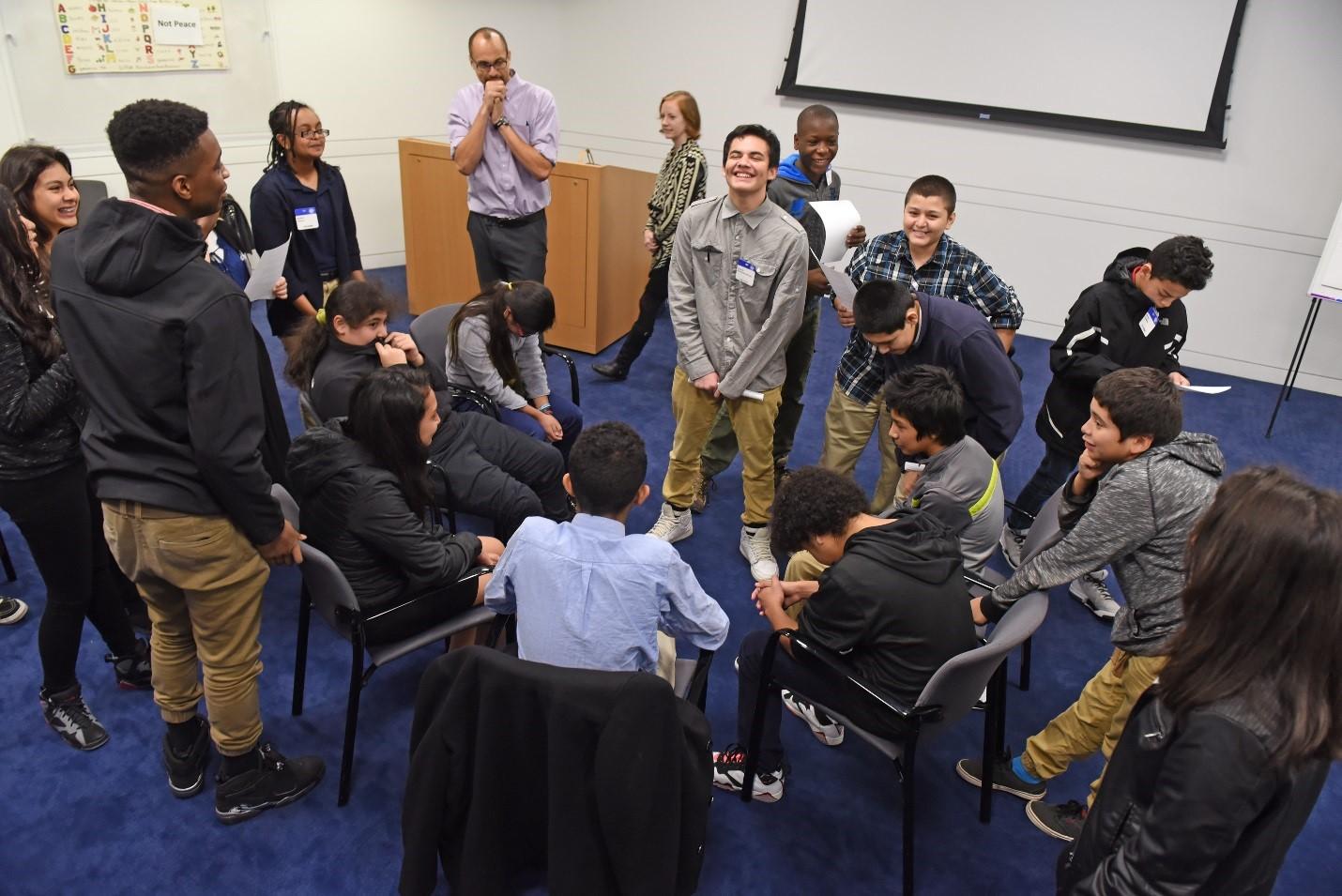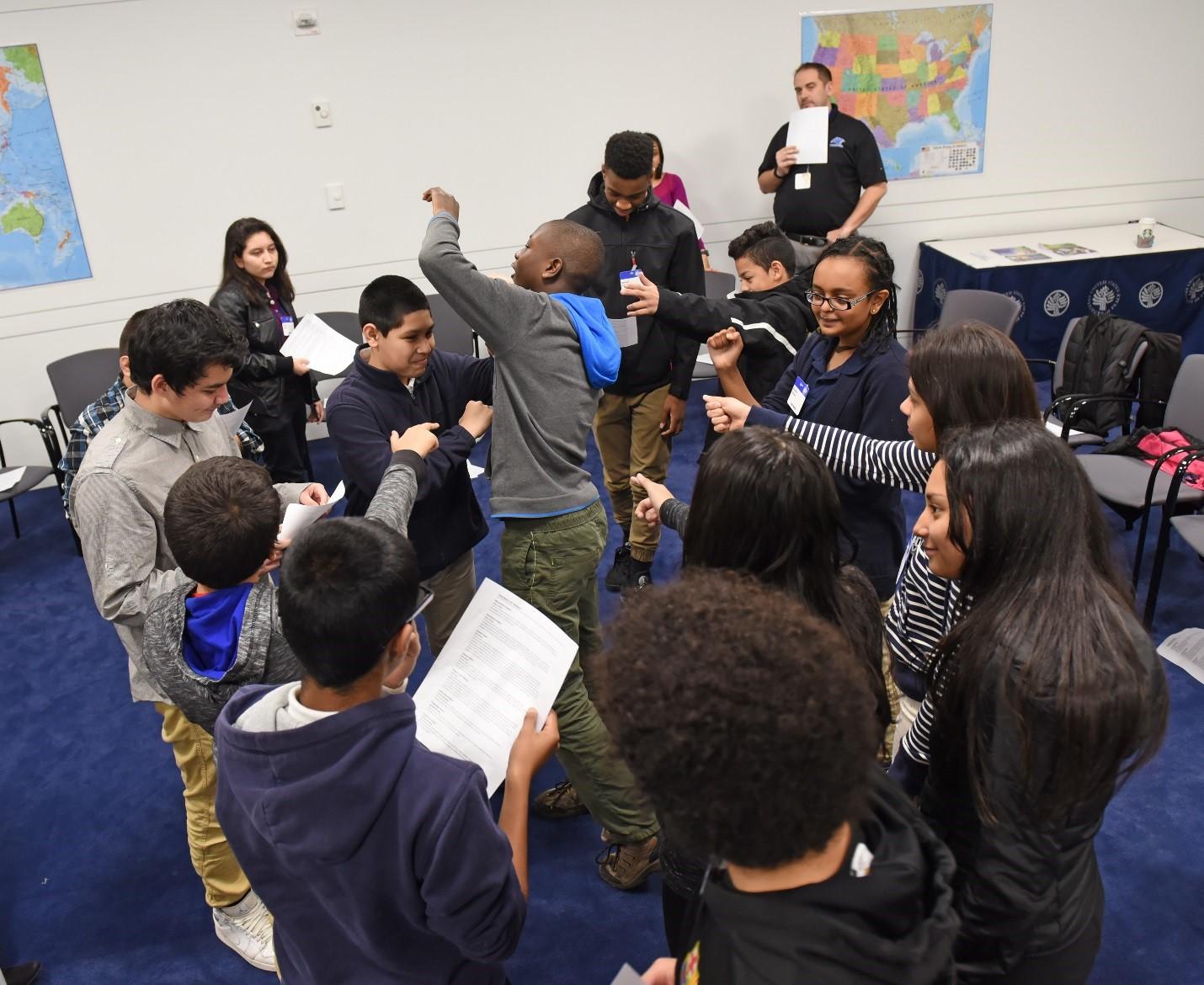Eighth Grade DCPS Students Learn the Principles and Tools of Nonviolence
“ Equality is key, non-violence is plan b
Peace is power, let it bloom like a flower”
These are the opening words of a poem written and read to U.S. Institute of Peace (USIP) President Nancy Lindborg by a middle school student at the conclusion of an educational program at USIP last Friday, January 8. The visiting 8th grade U.S. History class from Brightwood Education Campus spent more than a half-day learning about the Institute’s work and exploring key themes and skills in conflict management and peacebuilding, focusing particularly on nonviolent action.
At Brightwood Education Campus, a public school in northwest Washington, DC, students receive an education in peace as well as the average classroom subjects. “Peace is a subject that needs to be taught, just like reading, math, and science,” teacher Monica Shah says.
With this in mind, Ms. Shah, who also teaches 2nd-5th grade peace classes at Brightwood, has been incorporating the concepts and skills of global peacebuilding into her 8th grade U.S. History class. A 2015-2016 USIPeace Teacher, Ms. Shah believes “that my work as a peace, human rights and social studies teacher is helping to build peace both at the local and global levels. Not only have students learned ways to develop and foster inner peace, but they have also been learning about peace activists and movements from around the world.”
This year, Ms. Shah’s 8th grade U.S. History class has been studying nonviolence as part of their curriculum. This spring, they will participate in the National History Day contest, preparing submissions that explore nonviolent movement leaders from history. A visit to USIP was a perfect complement to Ms. Shah’s curriculum, and part of her own close work with the Institute’s Global Peacebuilding Center throughout this school year.
The students began their program at USIP with an introduction to the Institute’s mission, history, and work. They discovered examples of USIP’s work in conflict zones, learning about peacebuilding projects such as a reality competition TV series for Iraqi youth called Salam Shabab. When asked why USIP would choose to support a project focusing on youth, one student replied “because youth are the future leaders of their country!”
Global Peacebuilding Center Program Officer Megan Chabalowski helped the 8th graders explore meanings of conflict and peace, coming to a common understanding of two basic ideas in international conflict management: that while conflict is an inherent part of the human condition, violent conflict can be prevented; and that peace is an active, ongoing process, based on knowledge, skills, and attitudes that can be learned and practiced. Several students shared what peace means to them, using words such as “endless,” “key,” and “the cure.”
The students then delved more deeply into the peacebuilding principle and tool of nonviolence, led by Academy Senior Program Officer Daryn Cambridge, with activities that explored types of power and options for nonviolent action. After learning about the theory and strategy of nonviolence, students were challenged with a scenario in which they had to consider which nonviolent actions they would use.
At the close of their program, the 8th graders were greeted by President Nancy Lindborg, sharing with her their day’s work and presenting her with a Peace Quilt made by Ms. Shah’s 2nd-5th grade students in honor of 2015’s International Day of Peace. In their own closing reflections, the students expressed a sense of their own ability to effect positive change in the world; in the words of one: “I am a peacebuilder because I do everything I can to incorporate peace into my life.”
Watch Monica's visit with her class to USIP for a day filled with fun activities exploring key themes and skills in conflict management and peacebuilding here.
Learn more about USIP’s resources for educators and students.




